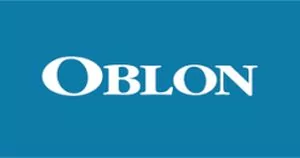- with readers working within the Media & Information industries
In Maquet Cardiovascular LLC. v. Abiomed Inc., Appeal No. 2023-2045, March 21, 2025, the Federal Circuit provided guidance as to when the prosecution history of one member of a patent family may act as an estoppel in the claim construction of another member of the family. At issue was the construction of claims 1 and 24 of U.S.P. 10,238,783 ('783) in view of the prosecution histories of its parent application, U.S.P. 9,789,238 ('238) and great-great-grandparent application U.S.P. 8,888,728 ('728). The '783 patent was directed to blood pumps which could be placed in a patient's vascular system without using a supplemental guide means. The guide was integrated into the apparatus.
At issue was whether constructing claims 1 and 24 were limited by amendments made in its parent and great-grandparent applications. The dispute revolved around the interpretation of the guide mechanism and guide wire limitations found in claims 1 and 24 reproduced in relevant portions below:
Claim 1:
An intravascular blood pump system, comprising:
. . . a guide mechanism comprising a lumen having a proximal end and a distal end, the guide mechanism adapted to guide a distal portion of said intra-vascular blood pump system to a predetermined location within a circulatory system of a patient;
wherein an axis coaxial with and extending through a portion of said guide mechanism extends through a region delimited by the outer cannula surface, and wherein the guide mechanism is configured to allow for a guide wire to slideably advance therealong.
Claim 24:
[a]n intravascular blood pump system, comprising: . . . a
cannula . . . . . ,
wherein the guide wire does not pass through the rotor
hub or the catheter.
During the prosecution of the '238 and '728 parent and great-great-grandparent applications, Maquet made representations regarding the guide wire which Abiomed claims restrict the scope of the '783 claims. The '783 patent describes its arrangement of the guide wire as avoiding the prior art techniques which used a supplemental guide guiding means. A supplemental guide also consumed space in the blood vessels. The '783 patent improved the intravascular systems of the prior art by employing a guide mechanism located on the device. The '728 patent described three ways of accomplishing this result. The first method is an over the wire mechanism where a central lumen is formed through at least a portion of the intra-vascular blood pump system such that a guide wire may be progressed therethrough and advanced to the predetermined location in the circulatory system of the patient. The second method is a "side-rigger" or "rapid exchange" type guide mechanism in which "a side lumen is formed along a length of at least one of the intravascular blood pump and the cannula" through which a guide element, such as a guide wire, may be advanced to the predetermined location in the circulatory system of the patient. The third technique is a "guide catheter" type guide mechanism, which includes a "conduit assembly" with a "guide catheter" and a "pump assembly."
The district court in interpreting the claims noted that two claims in the '238 patent were amended by Maquet in response to a non-enablement rejection in accordance with the examiner's suggestion to recite that the entire elongate lumen as distal to one or more of the "rotor, first port or rotor shroud. The district court treated Maquet's action as an acquiescence as a disclaimer of the broader claim requiring that '783 claim must be interpreted to require that the guide-wire lumen is not distal to the cannula.
The court further interpreted claims 1 and 24 based on the '728 prosecution that the claims must also be interpreted such that "the guide wire does not extend through the free space in between the rotor blades." In the '728 prosecution history the examiner's notice of allowance for certain claims in the '728 patent distinguished a prior art reference,"Völker."According to the district court, the examiner noted that Völker threaded its guide wire through the rotor blades and did not have a separate guide lumen and thus did not teach or suggest the guide mechanisms disclosed in the '728 patent; that is, Maquet "adopted" the examiner's position in the notice of allowance.
On appeal, Maquet contested that it had acquiesced in the disavowal of claim interpretations different from that of the two prior applications. The Federal Circuit noted where "the alleged disavowal is ambiguous, or even amenable to multiple reasonable interpretations, we have declined to find prosecution disclaimer." Avid Tech.,Inc. v. Harmonic, Inc., 812 F.3d 1040, 1045 (Fed. Cir. 2016).
Regarding the term "guide mechanism comprising a lumen" Maquet argued that the court improperly relied on the '238 patent because the '783 and '238 claims were not sufficiently similar to apply the prosecution history of the '238 patent to the claims of the '738 patent. Claim 1 of the '783 patent recites a "guide mechanism comprising a lumen." Then-pending claims 14 and 22 of the '238 patent did not claim a guide mechanism but claimed an "entire elongate lumen distal to the intravascular blood pump," and then after amendment, an entire elongate lumen "distal to the rotor." Additionally, claim 1 of the '783 patent does not require the claimed lumen to be in a specific position or length. In contrast the '238 has both as limitations.
Abiomed argued that prosecution disclaimer applies because the patents share common subject matter. The argument was rejected because the patentee made a clear and unmistakable disavowal of claim scope. Avid Tech., Inc., 812 F.3d at 1045. The Court required that the claims share limitations in common.
The Guide Mechanism Claims
The guide mechanism is defined in the '728 and '783 patents in essentially the same terms.
Claim 1 of the '783 patent defined it as:
"wherein the guide mechanism is configured to allow for a guide wire to slideably advance there-along"
In '728 claim 151 define it as:
"wherein the guide mechanism is configured to allow for a guide wire to slideably advance therealong"
Thus, the claim term is identical in both patents and the only difference is that the Court found the differences in other portions of the claims to be virtually identical; the difference being that claim 1's "comprising a lumen" while in claim 15 the recitation is "configured as a second lumen.' The only other change is replacing claim 1's "comprising a circulatory system" with "the circulatory system." The Court held that these differences were not enough to defeat Abiomed's claim that the '728 prosecution history was relevant to interpreting the '783 claim 1.
The Court found that Maquet did not make a clear disavowal of claim scope based on its acquiescence to the examiner's statements in '728. An applicant's silence in response to an examiner's notice of allowance will rarely rise to a clear and unmistakable claim disavowal. See Salazar v. Procter & Gamble Co.,414 F.3d 1342, 1345 (Fed. Cir. 2005). Further, Maquet filed an RCE making the Volker reference of record in the '783. The examiner issued a second notice of allowance noting that Volker lacked several features of the '783 invention. Maquet never responded to the second notice of allowance and, thus, there was no unmistakable disavowal of a guide wire running through the rotor blades. Abiomed also argued that there was no disclosure in Maquet of the guide wire passing through the rotor blades. This argument failed because no words expressed a disavowal.
Despite Maquet surviving the claim construction challenge, it must now prove infringement. The lesson here is that one prosecuting a family of patents should consider the impact of arguments and amendments on claim interpretation. Gratuitous arguments should be avoided. Here Maquet made an argument in an IPR which the Court did not consider a disavowal, but it's not clear why the argument was made. When filing a response, one should consider for each argument made how does this argument help and how can it be turned against me.
Footnote
1 The '728 claim numbers are as in the Notice of Allowance.
The content of this article is intended to provide a general guide to the subject matter. Specialist advice should be sought about your specific circumstances.


